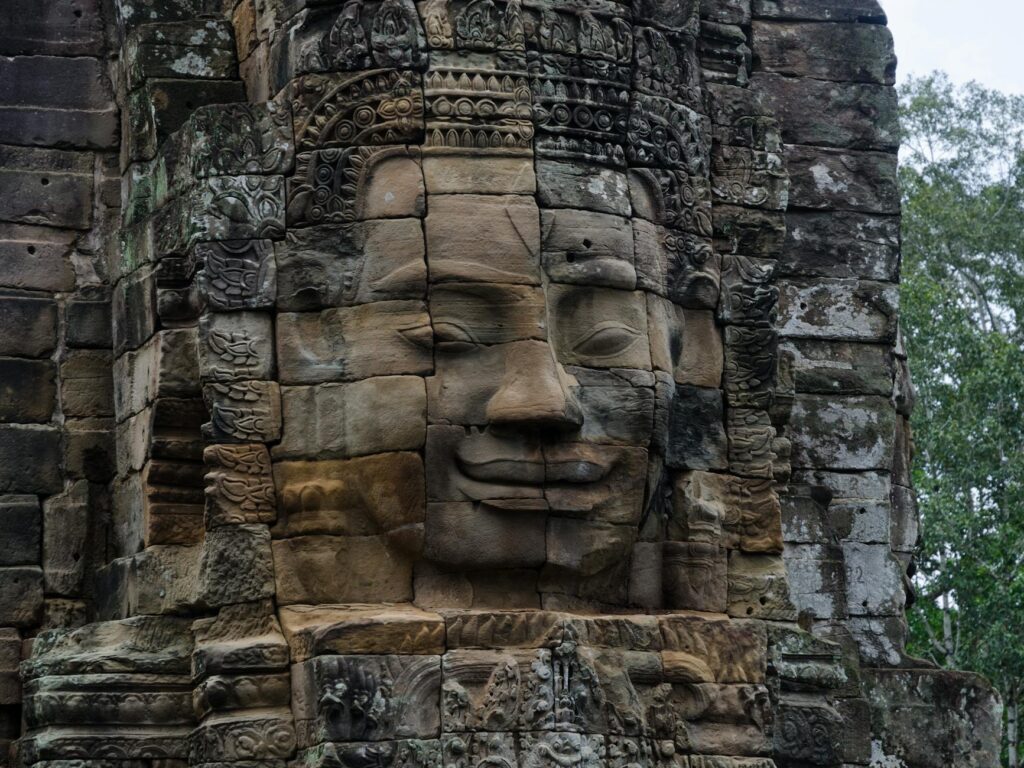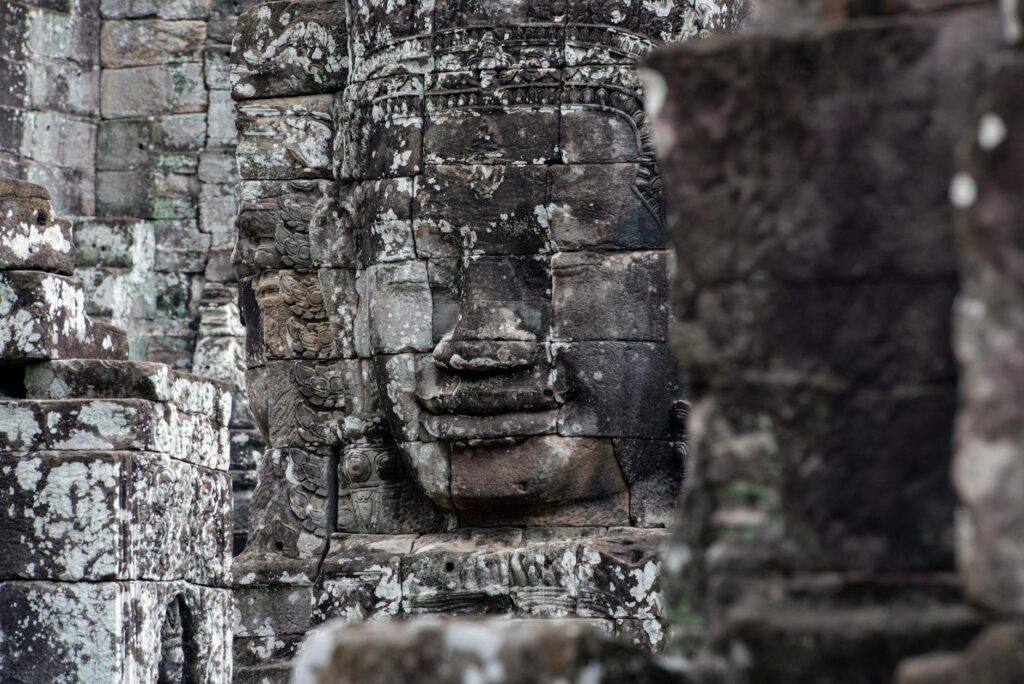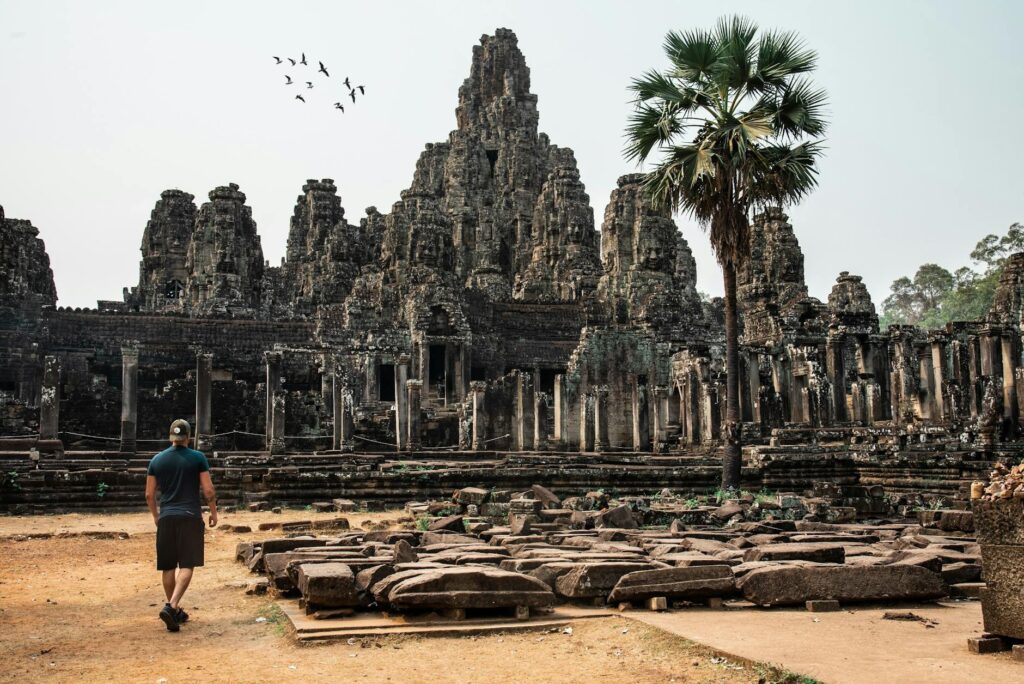Introduction
Bayon Temple, the enigmatic heart of Angkor Thom, captivates visitors with its mesmerizing stone faces. These serene yet powerful carvings, etched into the temple’s towers, silently guard secrets from centuries past. This blog post delves into the history, architecture, and enduring mystery surrounding this magnificent structure. 
The Enigmatic Faces
The most striking feature of Bayon is undoubtedly its multitude of smiling faces. These bas-reliefs, appearing on every corner of the temple’s towers, are estimated to number in the hundreds. Their expression, a blend of serenity and contemplation, continues to inspire wonder and debate. Scholars have proposed various interpretations of these faces, ranging from depictions of Avalokiteshvara, the bodhisattva of compassion, to representations of the Khmer King Jayavarman VII himself. 
Architectural Marvel
Beyond the faces, Bayon’s architecture is breathtaking. Its unique style, a blend of Khmer and Buddhist influences, showcases the sophisticated engineering and artistic skill of its creators. The temple’s multiple levels, intricate galleries, and hidden passages form a labyrinthine structure that speaks volumes about the beliefs and practices of the era. You can learn more about the overall layout of Angkor Thom to understand Bayon’s place within the larger complex.
Historical Significance
Built during the reign of King Jayavarman VII in the late 12th and early 13th centuries, Bayon served as the state temple of his capital city, Angkor Thom. Its construction involved an immense workforce and resources, reflecting the power and prosperity of the Khmer Empire at its zenith. The temple’s inscriptions provide valuable insights into the political and religious landscape of the time. Further research into Angkorian history can offer a deeper understanding of the temple’s context. Discover more about the reign of Jayavarman VII to appreciate his influence on Angkor’s architecture.
The Mystery Remains
Despite extensive research, many questions about Bayon Temple remain unanswered. The precise purpose of the faces, the methods used in their creation, and the full extent of the temple’s original design continue to fuel speculation and debate. The ongoing archaeological investigations at Angkor are continually shedding new light on this enigmatic site. Explore the ongoing conservation efforts to learn more about protecting this valuable heritage.
Conclusion
Bayon Temple stands as a testament to the artistic genius and spiritual depth of the Khmer civilization. Its enigmatic stone faces, intricate architecture, and enduring mysteries continue to captivate and inspire visitors from around the world. [IMAGE_3_HERE] A visit to this remarkable site is a journey into the heart of Angkor and an experience that will remain with you long after you leave. Plan your trip to Angkor Wat today!
Frequently Asked Questions
What is the significance of the faces at Bayon? The significance of the faces is still debated, with theories ranging from representations of the king to Buddhist deities.
When was Bayon Temple built? Bayon was primarily built during the reign of King Jayavarman VII, in the late 12th and early 13th centuries.
How can I visit Bayon Temple? You can visit Bayon Temple as part of a broader trip to Angkor Archaeological Park in Cambodia.
What is the best time to visit? The best time to visit is during the dry season, from November to April.
Are there guided tours available? Yes, guided tours are readily available at the site; they provide valuable historical context and insights.

